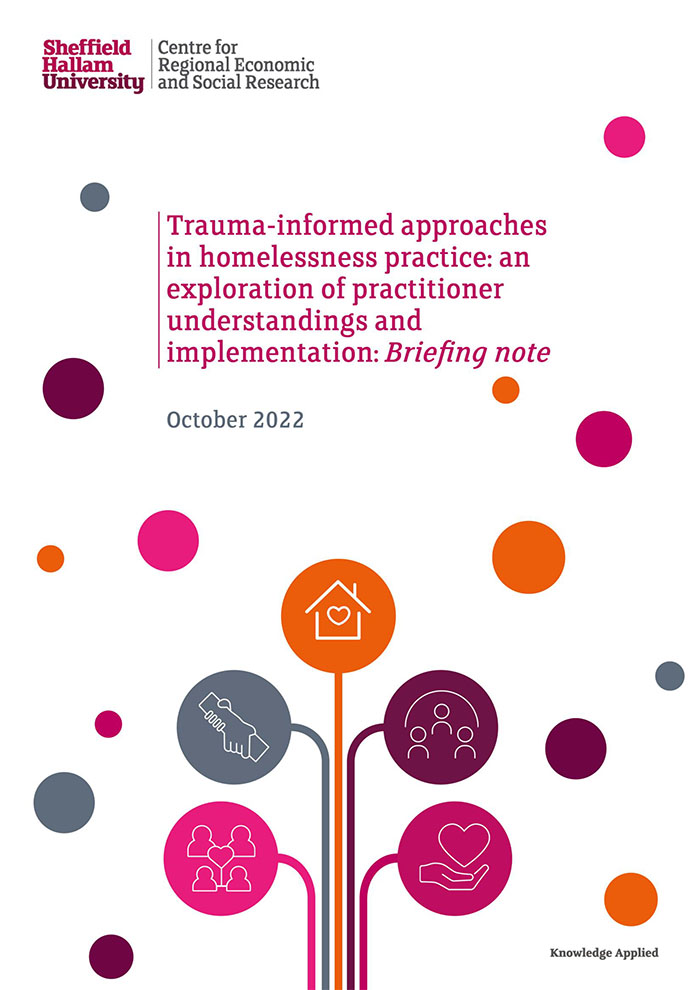Project Director: Lindsey McCarthy
Project Duration: 2021-2022
With increasing interest over the last ten years, understanding and responding to trauma and its effects has become a central concern, not least for people experiencing homelessness and multiple disadvantage. While it is estimated that at least one in ten adults in Britain will have experienced four or more adverse experiences during their childhood, this figure increases to 85 per cent for adults facing multiple disadvantage. It is widely acknowledged that not only are poverty, homelessness and trauma interlinked, they are often one and the same. Homelessness, for instance – both the experience of and the factors leading up to it – is traumatic.
With origins in the criminal justice and mental health systems of the US, trauma-informed approaches (TIAs) have been defined as “an organizational change process centred on principles intended to promote healing and reduce the risk of re-traumatization for vulnerable individuals”. In the UK, TIAs are being increasingly promoted and implemented across systems and services as an improved approach to tackling multiple disadvantage.
Despite this interest – or, perhaps because of their relative novelty – there are several knowledge gaps surrounding TIAs and how they are implemented in practice. First, there are multiple perspectives and conceptualisations of trauma and, as such, questions around how it is understood by practitioners working within TIAs. Second, without commonly agreed definitions, structures, standards or governance for trauma-informed services it is unclear what constitutes trauma-informed practice and the extent to which this might vary between services. And third, do they reflect the reality of practice? Are TIAs feasible in every context and environment?
This study aimed to begin addressing these knowledge gaps through the following research questions, with specific focus on services working with people experiencing homelessness and multiple disadvantage:
- How do practitioners understand trauma and trauma-informed approaches?
- How do understandings of trauma and trauma-informed approaches translate to practice?
- What are the barriers and enablers to implementing a trauma-informed approach?
The study focused on one London borough council. Within this case study location, in-depth semi-structured interviews were conducted with 15 professionals, from a range of organisations and covering a range of roles/levels (from commissioning and managerial to frontline officers). This case study work was supplemented by interviews with four professionals working in frontline, managerial and training roles across England with specific expertise in trauma and/or trauma-informed approaches.


